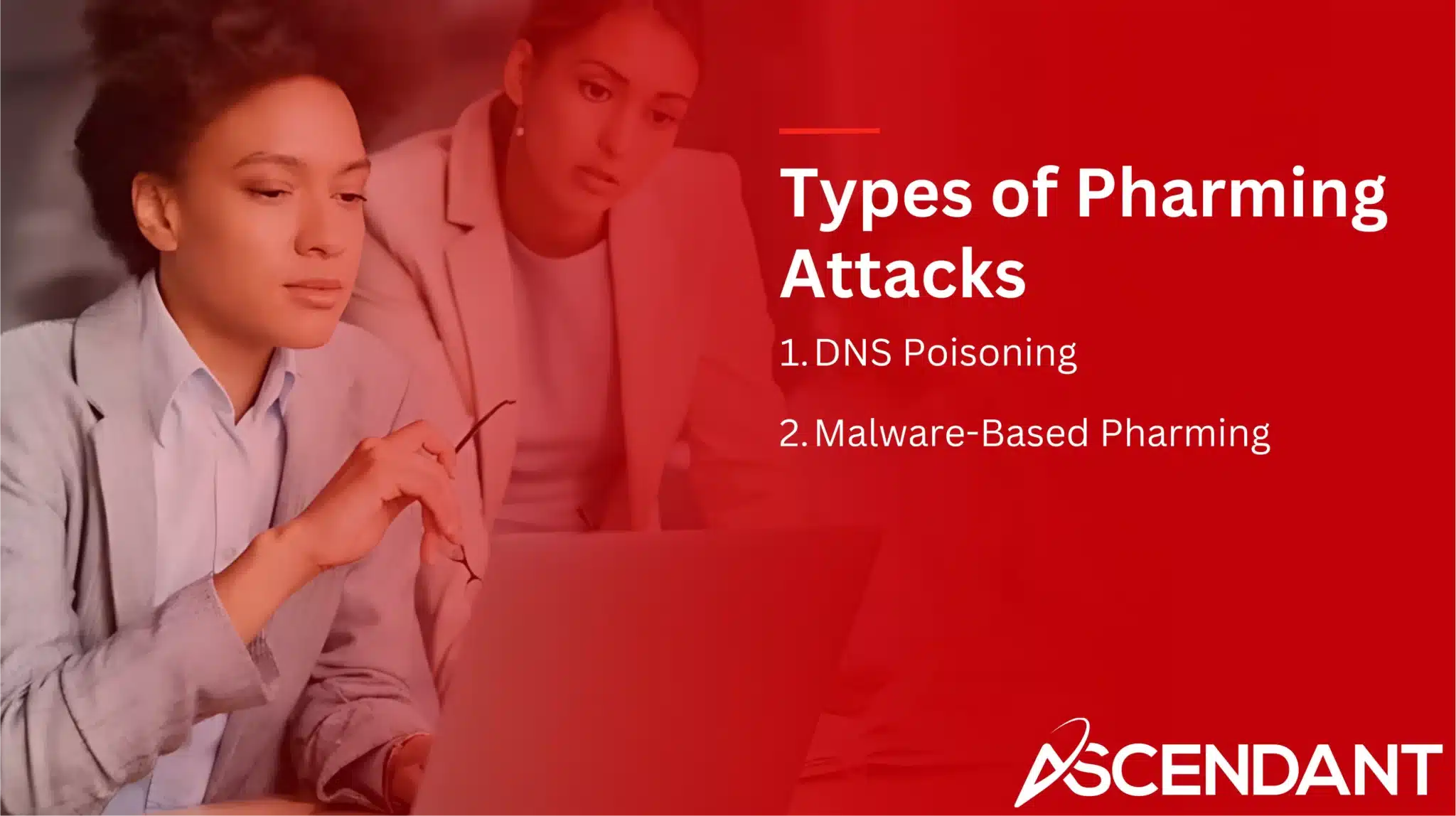Pharming is a cyber attack that redirects users from real websites to fake ones to steal personal information. It’s more sneaky than phishing because it doesn’t need user action. This article unveils how pharmacy works, its types, and how you can protect yourself.
In This Article:
- Understanding Pharming: Definition and Key Concepts
- How Does Pharming Work?
- Types of Pharming Attacks
- Real-World Examples of Pharming Attacks
- Signs You Might Be a Victim of Pharming
- Phishing vs. Pharming: Key Differences
- Preventing Pharming Attacks: Best Practices
- The Role of DNS Servers in Pharming Attacks
- Protecting Your Network from DNS Cache Poisoning
- Importance of User Awareness in Combating Pharming
Key Takeaways
- Pharming redirects users to malicious websites by altering DNS settings, making it a more insidious threat compared to phishing.
- There are two primary types of pharming: DNS poisoning, which corrupts DNS servers, and malware-based pharming, which modifies local file settings on victims’ computers.
- Preventative measures against pharming include using updated antivirus software, implementing DNS Security Extensions (DNSSEC), and educating users about recognizing potential threats.
Understanding Pharming: Definition and Key Concepts
Pharming, an online fraud technique, redirects users to fake websites to steal personal information. This is achieved by altering the DNS settings that translate domain names into IP addresses, effectively rerouting web requests to malicious sites. Unlike words phishing and farming, which relies on deceptive emails to lure victims, pharming uses malicious code to redirect users, making it harder to detect and more dangerous.
Pharming attacks can lead to the theft of sensitive information such as login credentials and financial details. Malware-based pharming, a common technique, involves installing malware on a victim’s computer to modify local files and redirect web traffic to fraudulent sites.
Grasping these concepts helps in understanding how pharmacy operates and methods to safeguard against it.
How Does Pharming Work?
Pharming attacks commence with the installation of malicious code on an unsuspecting victim’s computer, which quietly runs in the background. It intercepts web requests and discreetly redirects users to a fraudulent website unbeknownst to them. Even as victims believe they’re navigating to their intended destinations online, this secret software steers them towards counterfeit replicas.
This method is characterized by malware-based pharming that tampers with DNS settings by altering locally stored IP addresses and adjusting files hosted within the user’s machine, resulting in redirections toward deceptive sites. Cybercriminals may deploy rogue DNS servers or hijack legitimate ones for orchestrating these scams. Consequently manipulating where users’ web inquiries land—to harvest personal data through bogus platforms.
The intricacy of pharming lies in its capacity to manipulate various stages between a user’s system and internet destinations—including routers—making detection efforts particularly arduous. By changing local host files, attackers map trusted domain names onto malignant IP addresses seamlessly guiding traffic astray while remaining under the radar necessitates understanding how pharming functions as it’s essential for thwarting such invasions.
Types of Pharming Attacks
Pharming attacks primarily fall into two categories: DNS poisoning and malware-based pharming. Both methods aim to redirect users to fraudulent websites but employ different techniques. DNS poisoning corrupts DNS servers or caches, while malware-based poisoning modifies a computer’s hosts file to reroute traffic.
Examining each type helps in understanding their mechanisms and impacts.
DNS Poisoning
DNS server poisoning, commonly known as DNS cache poisoning, is an attack method in which nefarious actors introduce spurious entries into the DNS cache. This act deceitfully redirects domain name lookups to malicious websites unbeknown to users, and can often result in identity theft and unauthorized access to online accounts. Such manipulation of data within the DNS tables by wrongdoers is also termed dns server poisoning.
The process involves contaminating both the DNS cache and servers with fraudulent data that changes how web traffic is routed—effectively guiding unsuspecting internet visitors towards deceptive sites. The attackers aim at weaknesses present within a DNS server’s setup to associate a false IP address with a legitimate domain on their own rogue server—a tactic that alters the authentic dns settings through what’s called dns table corruption.
Such incidents of dns caching system compromise have vast consequences. They hold potential harm for countless individuals, especially those using free or public networks where susceptibility looms higher than usual. By rewriting rules dictating network traffic directionality via such attacks like dnscache poisoning, perpetrators are able not only reroute, but also mislead victims onto fake webpages designed specifically for filching private info.
Malware-Based Pharming
In the practice of malware-based pharming, attackers first install malicious code onto a target’s computer to lead them to sham websites. This form of pharming achieves its goal by deploying malware that changes DNS settings or edits the host file on a user’s system, which causes redirections to fake sites.
Trojans are commonly employed in this method, exploiting weaknesses in files hosted locally on the victim’s machine. Attackers manipulate these locally hosted files to take charge of where users are directed when they navigate online. By tampering with these files and redirecting traffic seamlessly, perpetrators can guide users toward counterfeit websites without any action from those targeted—making it an insidious and highly efficient type of cyber assault.
Real-World Examples of Pharming Attacks
Pharming attacks present a considerable threat as they are capable of impacting numerous users by taking advantage of vulnerabilities in DNS servers. A notable instance occurred in 2007 when an advanced pharming assault affected around fifty financial institutions, resulting in the creation of fake sites designed to mislead individuals into divulging their personal credentials. This incident underscored both the extent and seriousness that pharmaceuticals can reach, underscoring why strong security protocols are essential.
In another case during 2019 within Venezuela, culprits established a fraudulent website alongside a counterfeit site with the aim of collecting sensitive information from people wanting to volunteer. Such occurrences reveal how pharming assailants specifically prey on particular groups, leveraging goodwill and trust for nefarious goals.
When networks become compromised due to these breaches, it places all connected users at risk. This is one way through which widespread consequences emerge. Different from phishing—which requires individual clicks—pharming operations have the capability to unwittingly redirect users directly towards deceptive websites without any direct input required from them. The severity and variety inherent within such real-life examples highlight just how imperative constant awareness and preventive strategies against pharming really are.
Signs You Might Be a Victim of Pharming
It is crucial to be vigilant for the hallmarks of a pharming attack in order to protect your private data. Indications like unwarranted redirects and abnormal requests for personal details often signal deceptive online behavior, which are telltale signs of these attacks. The insidious nature of pharming lies in its ability to harm without users actively visiting any specific website. They’re seamlessly redirected towards malicious sites instead.
Being aware of these signals can help individuals preventively recognize and combat the dangers posed by pharming attacks. These types of cyber threats pose a significant risk due to their low requirement for user engagement—meaning that even those whose computers are untouched by malware aren’t immune. Constant vigilance and an understanding of the risks at play are key defenses against becoming ensnared by pharming schemes.
Phishing vs. Pharming: Key Differences
Pharming and phishing aim to mislead users but employ varied tactics. Phishing engages victims through direct communication such as emails, enticing them toward counterfeit websites. On the other hand, pharming manipulates system weaknesses to reroute users, which is stealthier since it does not hinge on actions like link clicks from the target.
Considered more dangerous than its counterpart, pharming can compromise numerous computers simultaneously without any conscious decisions or realization from those affected. Its capability to redirect users seamlessly surpasses that of phishing because it operates with minimal user interaction.
Grasping these nuances between pharming and phishing sheds light on the extent and nature of these digital hazards.
Preventing Pharming Attacks: Best Practices
To combat pharming attacks, it is imperative to employ a comprehensive strategy that includes the use of trustworthy antivirus software updated on a regular basis. The latest anti-malware tools offer proactive protection by preventing harmful programs from tampering with the computer’s hosts file.
Securing Wi-Fi routers through periodic updates to their default usernames and passwords can greatly diminish instances of DNS poisoning. The deployment of DNS Security Extensions (DNSSEC) fortifies verification processes for DNS replies, thus obstructing unauthorized modifications. Vigilant scrutiny of DNS records is essential to spot any illicit alterations indicative of pharming exploits.
Educating people about the mechanics behind pharmacy enables them to practice more secure online habits, bolstering their cybersecurity posture. Steering clear from websites lacking security measures is paramount as they might serve as traps for harvesting personal information. Embracing these protective actions offers considerable safeguards against the threats posed by pharming attacks, both for individuals and businesses alike.
The Role of DNS Servers in Pharming Attacks
A pivotal component in pharming attacks, the Domain Name System (DNS) is responsible for converting domain names to IP addresses. Due to its integral role in navigating the internet, DNS servers become a strategic target where attackers can reroute users from authentic websites to counterfeit ones by exploiting vulnerabilities within these systems.
Pharming assaults involve compromising DNS server integrity by altering their records. This results not only in users being directed toward fraudulent sites, but also perpetuates the spread of corrupted information across various servers. The lack of uniformity within DNS protocols means different systems might react differently when tampered with, which enhances the potential success rate of such pharming tactics.
To safeguard against DNS cache poisoning and similar threats, employing measures like the DNS Security Protocol (DNSSEC) provides an authentication mechanism ensuring that all responses come from genuine authoritative name servers. Modifying Time to Live (TTL) values on caching servers could curtail instances of storing invalid data entries for extended periods. Reducing overall exposure risks associated with cache poisoning episodes. Vigilant monitoring over returned response patterns offers another layer of defense capable of identifying and mitigating unwanted manipulations when implementing solutions such as DNNSEC isn’t feasible.
Protecting Your Network from DNS Cache Poisoning
To safeguard your network against pharming attacks, it is essential to adopt particular strategies that counteract DNS cache poisoning. By employing centralized and automated DNS solutions, you can streamline the integration of DNSSEC, which facilitates easier upkeep and modification of security configurations throughout your network.
To these protocols, consistent surveillance of DNS records paired with assigning a shorter TTL for DNS inquiries aids in mitigating the consequences of storing incorrect addresses in the cache. When implemented alongside stringent security measures, such tactics markedly decrease the vulnerability to DNA cache poisoning, offering substantial defense against potential pharming attacks.
Importance of User Awareness in Combating Pharming
Educating users on the signs and methods of pharmacy is a crucial step in enabling them to shield themselves and their networks. Vigilance and proactive measures by individuals are key elements in tackling the continuously advancing threat posed by pharming attacks.
Instilling knowledge about social engineering tactics significantly improves internet users’ ability to recognize and steer clear of these attacks. Implementing two-factor authentication for online accounts provides an additional safeguard against illicit entry, bolstering user defenses substantially against pharming incursions.
Summary
Pharming attacks pose a significant danger in today’s online landscape, clandestinely steering users towards counterfeit websites with the aim of exfiltrating sensitive data. It is essential to grasp how pharmacy works, be alert for its indicators, and adhere to protective measures to ward off such assaults. Whether it’s through DNS poisoning or employing malware for pharming purposes, these strategies differ yet share a common objective: deception and exploitation.
Arming oneself with knowledge and remaining ever vigilant are key defenses against the stealthy threat of pharming. By embracing awareness and taking proactive steps towards cybersecurity, individuals can secure their personal and financial information from these crafty schemes.
 Frequently Asked Questions
Frequently Asked Questions
What is pharming?
Pharming is a deceptive technique that manipulates DNS settings to redirect users to fake websites with the intent of harvesting their personal data.
Such actions greatly endanger your internet safety and confidentiality.
How does pharming differ from phishing?
Pharming differs from phishing in that it manipulates system vulnerabilities to redirect users to fraudulent sites without their awareness, whereas phishing involves deceptive emails that trick victims into providing personal information.
What are the signs of a pharming attack?
The signs of a pharming attack include deceptive website behavior, unexpected redirects, and unusual requests for personal information.
It’s crucial to remain vigilant and verify website authenticity to protect your data.
How can I protect myself from pharming attacks?
To safeguard against pharming attacks, it is essential to utilize dependable antivirus programs, implement DNSSEC, and make a habit of changing default passwords routinely.
Remaining alert to any unusual activities is equally important in the defense of your personal data.
What role do DNS servers play in pharming attacks?
Pharming attacks heavily rely on DNS servers, which play a vital role by converting domain names to IP addresses. This conversion process is exploited by attackers to redirect users toward deceptive websites.
It is of utmost importance to fortify the security measures around DNS servers in order to safeguard against these types of risks.


